How Thermal Imaging Works
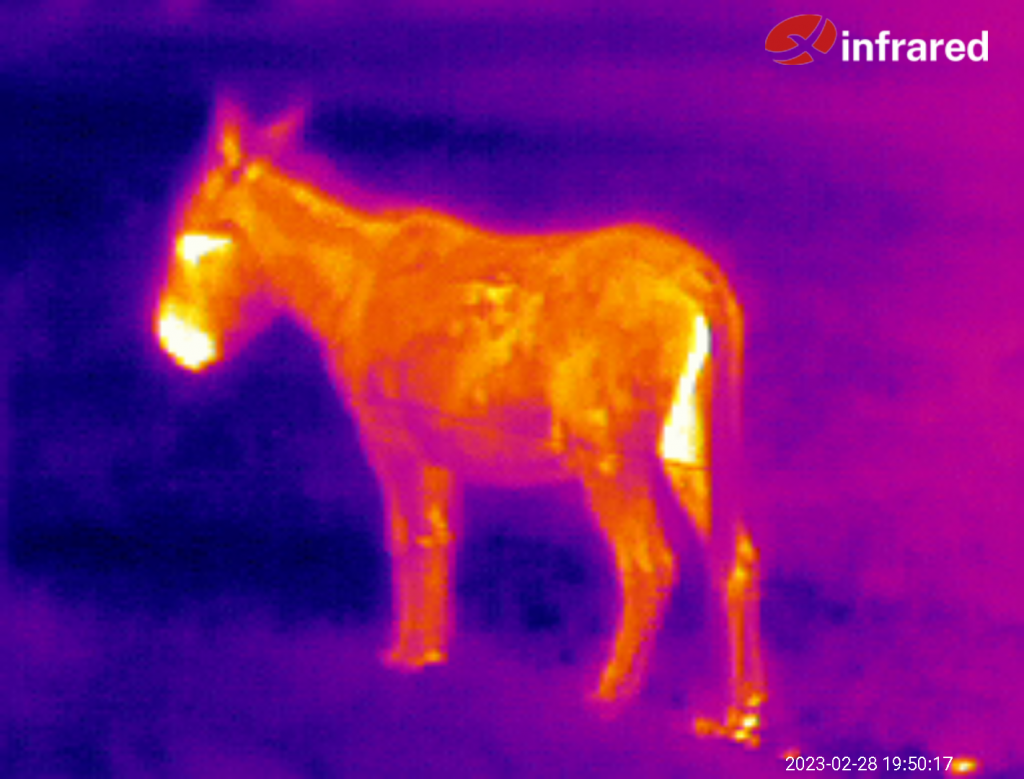
Thermal imaging is an incredible tool that literally changes the way you see as it enables you to see ignore visual camouflage and/or see in complete darkness.
With the ability to see heat signatures, thermal imaging can be incredibly useful in a wide range of applications and users, particularly for security, military, wildlife documentary makers, wildlife enthusiasts and hunters.
In this article, I go over how thermal imaging works, with a particular emphasis on thermal binoculars, monoculars and the new thermal smartphones work, give links to the reviews of thermal imaging devices I have tested and how they can used to detect and observe wildlife.
What is Thermal Imaging?
Thermal imaging is a technology that allows us to observe the heat signatures emitted by almost any object and because of this, it is particularly effective when used with living beings and especially warm-blooded ones!
This technology is based on the principle that all objects with a temperature above absolute zero (-273.15°C) emit heat in the form of infrared radiation. Thermal imaging cameras detect this infrared radiation and convert it into an image that we can see on a screen.
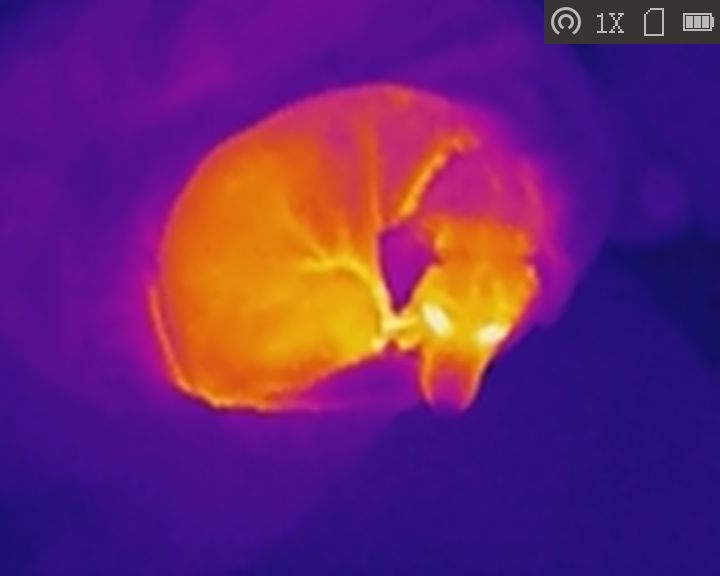
So, how does Thermal Imaging work?
In a nutshell, thermal monoculars, binoculars, cameras, and other similar devices have special detectors inside them, often referred to as infrared sensors, they are capable of detecting the heat emitted by objects with a temperature above absolute zero in the form of infrared radiation.
They then send a signal to the camera’s processor that converts the energy contained in the infrared wavelength into a visible light display based on the intensity of the wavelength (heat) that it has detected and thus this allows us to “see” these objects, regardless of the level of visible ambient light.
Thermal Detectors
Thermal binoculars, monoculars, smartphones, and other imaging cameras and devices have detectors inside of them made up of uncooled focal plane arrays of Vanadium Oxide. This also goes by the name of Vanadium Pentoxide due to its chemical makeup of two parts Vanadium and five parts Oxygen.
With thermal imaging, it is the Vanadium that is important as it has a high level of thermal resistance and thus is often used as the material to make bolometers (electromagnetic radiation detectors) and the microbolometer arrays used for thermal imaging in thermal monoculars, binoculars, and cameras.
The hotter an object is, the more infrared radiation it produces. The microbolometers inside the thermal camera are able to differentiate the temperature from the amount of infrared radiation that hits it and thus it then assigns that particular pixel to show the corresponding color for the viewer.
To improve performance, thermal imaging cameras also incorporate a special lens that is designed to focus infrared radiation onto the infrared sensor. This lens is made from materials that are transparent to infrared radiation, such as germanium or silicon. This allows the lens to capture the maximum amount of infrared radiation and thus helps to create a higher-quality thermal image.
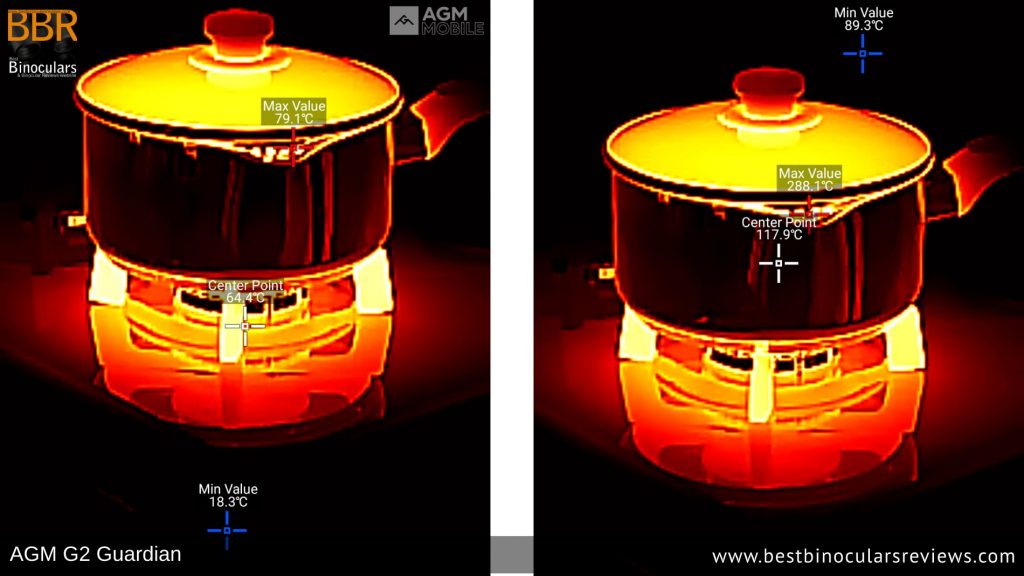
What is Pixel Pitch in Thermal Imaging?
Measured in microns (µm), the thermal Imaging Pixel Pitch refers to the distance between the centers of two pixels in the microbolometer.
A smaller pixel pitch is able to produce a finer image quality and a physically smaller thermal sensor.
However, a larger pixel offers more sensitivity. In my research, it seems that most commercially available thermal optics have pixel pitches of between 8 to 17 microns, with the lower number being the best quality.
So What is the Resolution of a Thermal Imaging Camera?
The resolution of a thermal imaging camera refers to the detail captured by the thermal detector. It is expressed as the number of pixels horizontally and vertically.
So to give an example, a typical resolution of a thermal device would be expressed as ‘160 x 120’.
This means the thermal camera has an array of 160 x 120 sensors or pixels or 19,600 in total to create its basic thermal image.
Other typical formats include 256×192 (49,152 pixels), 384×288 (110,592 pixels), 640×480 (307,200 pixels), and 1024×768 (786,432 pixels).
Tip: It is important to not get confused between the resolution of the monitor/screen on the device and that of the sensor resolution.
Is Pixel Count in Thermal Imaging Important?
Yes and No: The total amount of pixels is what the thermal camera uses to make its image.
However, because each pixel that you see in the view has its own individual microbolometer, you can understand why most thermal devices (even the very best ones) tend to have a far lower resolution than what we have become accustomed to seeing on an image or video taken with a standard digital camera.
Thus when deciding which thermal imaging device to get, the pixel count is an important specification to keep your eye on, but also keep in mind that more pixels equal a more costly device, and depending on your exact needs, you may not actually need to get the most detailed thermal image available to just detect an object.
What is the Fill Factor in Thermal Imaging?
The fill factor in thermal imaging is the ratio of the sensitive surface of all pixels to the total area of pixels. Sensors with a higher fill factor can absorb a larger amount of energy.
What does Refresh Rate mean in Thermal Imaging
The refresh rate of a thermal imaging camera is the frequency at which the image is refreshed on the screen.
This rate is expressed in ‘Hertz’ (Hz) where 1Hz is equal to 1 frame per second. Common refresh rates on thermal imaging sensors are as follows: 9Hz, 25Hz, 30Hz, 50Hz, and 60Hz.
The higher the ‘Hertz’, the more often the image is refreshed and thus updated to reflect any changes.
So a thermal imager with a low refresh rate like 9Hz could be fine for more static observation and objects, but may feel laggy and show jerky images for moving objects or if you move the view about often, whilst a thermal camera with a higher frame rate will show a movement as being much smoother.
Thermal Camera attached to your Smartphone
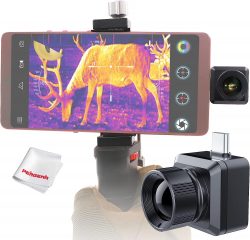
Currently, the least expensive way that I know of to get into thermal imaging (under $500) is by using a small thermal camera that connects to your smartphone with an adapter.
Then with the help of an app, you use this camera to view and record the thermal images it collects.
Options include the FLIR ONE or SEEK Thermal compact camera. Another very good example here is InfiRay Xinfrared T2 Pro Thermal Eye which currently retails for about $420 / 450€ has a Sensor Resolution of 256x192, a Pixel pitch of 12μm, and a frame rate of 25Hz.
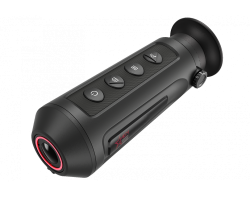
Entry Level Thermal Monoculars
Popular entry-level thermal monoculars like the AGM Asp-Micro TM160 (pictured right) and the TK Scout from FLIR now cost well under $600 (often around $500) and often have resolutions of 160x120 pixels, pixel pitches of about 8μm to 14μm and sensor refresh rates that are typically about 25 Hz.
More Info & Recommendations
Thermal Imaging Smartphones
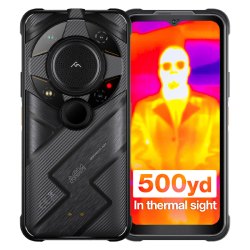
Could the enthusiast-level, but dedicated thermal monoculars go the way of cameras? Meaning that all but higher-end thermal devices become incorporated into your next smartphone?
Quite possibly yes, especially if they all are as good as the AGM G2 Guardian that I am currently testing:
With a suggested retail price of $899, not only do you get a high-end smartphone with a bunch of features, but also a fully functional standard camera, micro camera, night vision camera (with IR illuminator), and a good thermal imaging camera all in one device!
In terms of thermals, you get a 256 x 192 sensor array, a Pixel pitch of 12μm, and a frame rate of 25Hz, all of which are as good as or better than most dedicated devices at around this price level. Admittedly the G2 Guardian is currently a market leader and so is better than most thermal imaging smartphones, but even so, I think we can expect to see more like this in the not-too-distant future.
For more details including example images, video, and all the other features on the phone:
AGM G2 Guardian Review: Thermal Imaging & Night Vision Smartphone
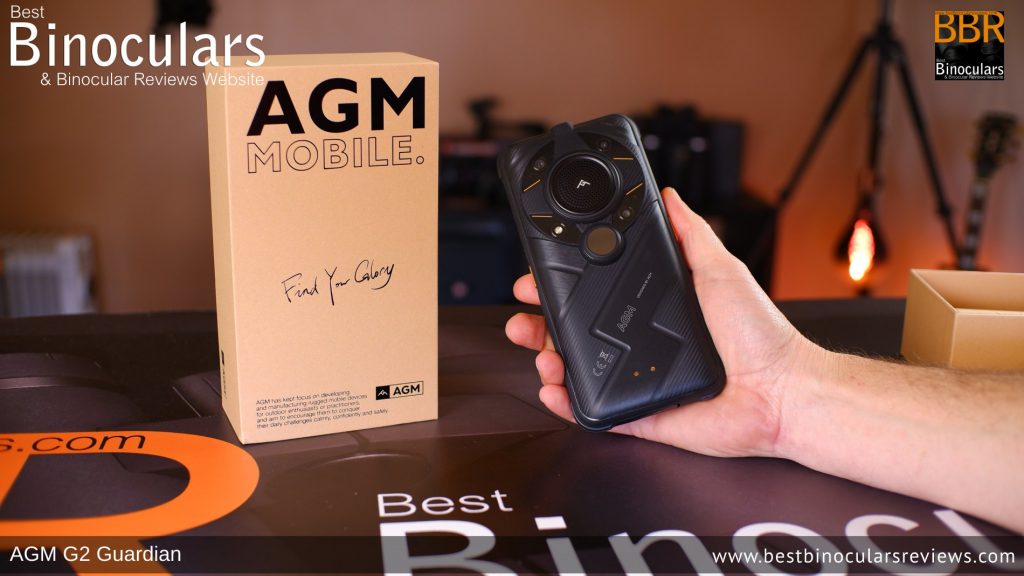
High-End Thermal Binoculars & Bi-Oculars
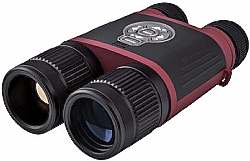
At the high-end of what is available to us, the public, where you can expect to pay upwards of $3000 on Thermal Imaging Binoculars like the ATN BinoX-THD (pictured right), the popular FLIR BHS-X Command, and the Armasight Helios 336 you can expect a resolution of about 640 x 480, 12 μm pixel pitches and refresh rates of about 50Hz.
More Info & Recommendations:

 Article | Posted by Best Binocular Reviews
Article | Posted by Best Binocular Reviews 
 Categories:
Categories:  Tags:
Tags: 
